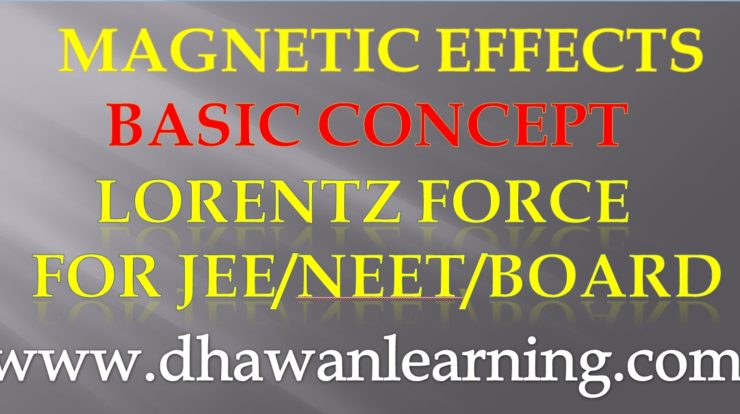
In their experiments Oersted, Ampere and Lorentz found that there was always deflection in magnetic compass placed near current carrying conductor. It was observed experimentally that force on moving charge placed in certain field depend on velocity of particle ‘v’, charge of particle ‘q’ and its direction with field. Due to its dependence on velocity it was concluded that this was not an electric field. So then emerged a new concept of magnetic field. This force on charge due to magnetic field was called Lorentz force. And unit of magnetic field was termed as Tesla.
Force F = q (v × B)


If v = 1 m/s, q = 1C and q = 900 Then B = F So B is numerically equal to the force experienced by unit charge when moving perpendicularly to field with 1m/s
Now as we know F = q v B Sin q
In this case if F = 1 N, the said field is of strength of 1 Tesla.
So 1 Tesla is defined as the field in which 1 C of charge moving at right angle with the field at 1 m/s experiences a force of 1 N
DOWNLOAD NOTES HERE
Most Imp. For q = 0, p, F = 0, For q = 900 maximum force.
Force is always perpendicular to ‘v‘ and ‘B‘, which confirms that deflection due to magnetic field will cause either circular or helical motion. But as force is only changing direction of velocity and magnitude magnetic field will never change kinetic energy of particle.
Why does magnetic field produce? What is the source of that ?
Source of magnetic field is moving charge or current carrying element (as current is itself moving charge).
To find the ,magnetic field due to a current element Bio Savart Law is used .
Biot savart law is explained in figure.

Let us understand the basic behaviour of charge in magnetic field
| Electric Field | Magnetic Field |
| Obey inverse square law and is long range force | Obey inverse square law and is long range force |
| Source is electric charge, which is scalar | Source is current element (moving charge) which is vector |
| Monopole does exist | Monopole does not exist |
| E is radial in direction for source | B is perpendicular to source element(I) & position vector of point of observation |
| F on ‘q’ is independent of ‘v’ in E; F = qE | F is perpendicular to v and B ; F = q (v × B) |
| Will change KE of moving charge | Will not change KE of moving charge |
| Deflection of ‘q’ is parabolic only | Deflection is helical (q ≠ 0,90,180) or circular (q = 90) |
| Deflection only when velocity is not parallel to field | Deflection only when velocity is not parallel to field |


